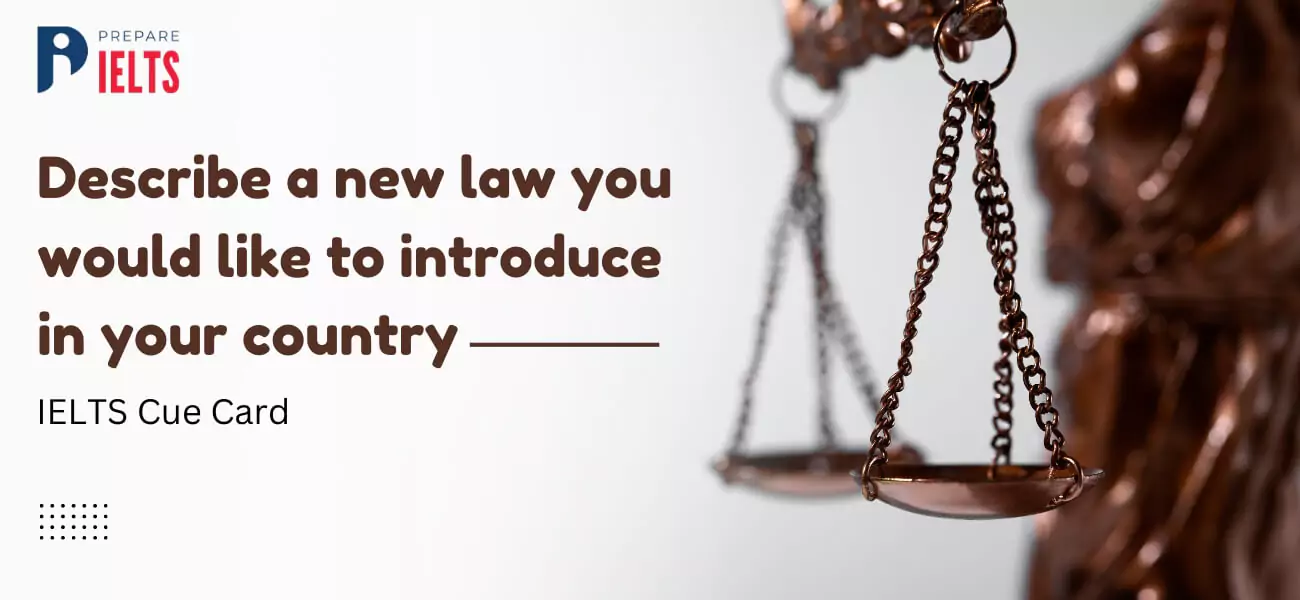
Overview
While preparing for IELTS Writing Task 1, you must be careful when using connectors, as these are important elements that work as a bridge, allowing the examiner to read effortlessly. Connectors help you show your language proficiency and ability to structure and organise your thoughts, eventually resulting in a higher score in your IELTS Writing Task 1.
In this blog, we have discussed what connectors are, how to use them, when to use them in IELTS Writing Task 1, and much more.
What is a Connector for Writing Task 1?
A word or a brief phrase that links your sentence to the surrounding sentences is known as a cohesive device (a connective word or a connecting device). They are usually used to indicate where you are in your essay, the order of events, or a logical connection with the previous phrase. For instance:
-
I was eager to join them for the vacation, but my exam dates were getting closer.
-
The movie received good ratings; however, it was very long.
You can see a comma between each word or phrase in these statements. The word "but" in the first example sentence notifies the reader that the information contradicts the preceding information. However, the preceding statement says that exam dates are getting closer. In the second example, "The movie" indicates that this is the first sentence phrase, but "however" continues the following phrase to complete the sentence.
Significance of IELTS Connectors Writing Task 1
Now that you are aware of connections for IELTS Writing Task 1 from the above information let's examine the significance of connectors in your Writing Task1 response:
-
Higher band score: Effectively using connectors shows that you can arrange and connect ideas, an essential requirement for a higher band score on the IELTS Writing Task 1.
-
Logical advance: Using the right connectors lets you lead the examiner through your analysis systematically and logically.
-
Well-structured content: Connectors can indicate how various elements of your response relate to one another by contrasting, demonstrating cause and effect, or establishing flow.
Register Now, for a free Mock test - Join Today!
When to Use Connectors in Writing Task 1
You should carefully use connectors throughout to obtain clarity and coherence in your IELTS Writing Task 1 response, which will improve your IELTS band score. Connectors can come in helpful in the following specific scenarios:
-
Presenting a Fresh Idea or Concept: Use connectors such as "furthermore," "moreover," or "in addition" to present a fresh concept or angle related to your assessment.
-
Comparing or Contrasting information: Use connectors like "however," "conversely," "on the other hand," or "similarly" to show differences or similarities between information details.
-
Identifying cause and effect: Use connectors like "therefore," "consequently," "as a result," or "due to" if you need to provide the reasoning behind a trend or pattern.
-
Structuring Information: This technique involves leading the examiner through a chronological or step-by-step process description, using connectors such as "first," "next," "then," and "finally."
-
Finishing your analysis: Use connectors like "in conclusion," "to sum up," or "overall" to summarise your main ideas or offer a closing thought.
Eventually, obtaining a higher band score on the IELTS Writing Task 1 can be significantly assisted by developing the strategic use of connections in conjunction with precise data interpretation and well-developed concepts. Mastering connectors will require effort and practice, but it can improve your writing ability and communicate your understanding of the visual data.
Also, Read: IELTS Exam Map Vocabulary 2024-25
Types of Connectors for Writing Task 1
Now that you know how important connectors are, let's look at the various kinds of connectors that you can use in your IELTS Writing Task 1:
1. Connectors for Writing Task 1: Transition Phrases
Although transition phrases aren't exactly connectors, they can improve coherence. Below are some of the examples:
| Additionally | Again | Also |
|---|---|---|
|
Besides |
Correspondingly |
Equally important |
|
Furthermore |
Hence |
Indeed |
|
In addition |
Likewise |
Moreover |
|
Next |
Of equal importance |
Otherwise |
|
Similarly |
Subsequently |
Then |
|
Therefore |
Thus |
Too |
2. Connectors for Writing Task 1: Listing or Sequencing
These connectors set up a flow of ideas or events and direct the reader through them. Below are some of the examples:
| After | All | Also |
|---|---|---|
|
And |
As a result |
At Last |
|
Before |
By comparison |
Eventually |
|
Finally |
First |
Firstly |
|
Furthermore |
In any case |
In contrast |
|
Instead |
Meanwhile |
Next |
|
On the contrary |
On the other hand |
Subsequently |
|
Then |
Therefore |
Thus |
3. Connectors for Writing Task 1: Showing Contrast
These connectors highlight contradictory trends in the data or offer opposing points of view. Below are some of the examples:
| Alternatively | Although | Apart from |
|---|---|---|
|
At the same time |
By contrast |
Conversely |
|
Different from |
Despite / In spite of |
Even so |
|
Even though |
Furthermore |
However |
|
In the same way |
In comparison |
In contrast |
|
Likewise |
Nonetheless |
Notwithstanding |
|
On the contrary |
On the other hand |
Otherwise |
|
Similarly |
Though |
Unlike |
4. Connectors for Writing Task 1: Emphasising Ideas
These connectors attract the reader's attention to important details or emphasise key elements in your study. Below are some of the examples:
| Certainly | Clearly | Even |
|---|---|---|
|
Especially |
Evidently |
Exactly |
|
Furthermore |
Indeed |
In fact |
|
In other words |
In particular |
Indisputably |
|
More importantly |
Notably |
Obviously |
|
Of course |
Particularly |
Precisely |
|
Remarkably |
Significantly |
Surely |
5. Connectors for Writing Task 1: Adding Information
These connectors offer more details or arguments to support your analysis even more. Below are some of the examples:
| Additionally | Also | And |
|---|---|---|
|
As well as |
Besides |
For example |
|
Furthermore |
In addition |
Moreover |
|
What's more |
Specifically |
n/a |
6. Connectors for Writing Task 1: Showing Cause and Effect
These connectors establish the connections of causality between the events or circumstances reported in the report. Below are some of the examples:
| Accordingly | As | As a consequence |
|---|---|---|
|
As a result |
Because |
Consequently |
|
Due to |
For |
For this reason |
|
Hence |
Henceforth |
If so |
|
Owing to |
Since |
So |
|
Thanks to |
Therefore |
Thereupon |
|
Thus |
Whereas |
Yet |
7. Connectors for Writing Task 1: Showing Trend
The connections in your report draw attention to the direction or pattern of the data. Below are some of the examples:
| Accordingly | Afterwards | As a consequence |
|---|---|---|
|
Consequently |
Continuing |
Eventually |
|
Following this |
Furthermore |
Gradually |
|
Hence |
Henceforth |
In the meantime |
|
In the long run |
Over time |
Subsequently |
|
Thereafter |
Therefore |
Throughout this period |
|
Thus |
To this end |
Ultimately |
|
While |
Yet |
n/a |
Ways to Use Connectors in Writing Task 1
Using connectors properly in your IELTS Writing Task 1 answer takes significant time and effort. To help you with IELTS Writing Task 1, read the following ways to use connectors;
-
Connectors should be placed correctly at the start of a sentence or before the idea they are presenting. For instance, "The graph indicates a consistent rise in sales." But in 2023, there was a significant drop.
-
Know that there are several different types of connectors, and they can be grouped by activity, for example, next, first, and so on; contrast (e.g., however, conversely); cause and effect (e.g., thus, consequently); and addition (e.g., additionally, moreover).
-
Using connectors can improve your writing by keeping your tone consistent. Remember that the IELTS Writing Task 1 requires a professional, neutral tone.
-
Make use of various kinds of connectors and avoid repetition and excessive use of the same connectors in your answer. Instead, enhance your writing with various connectors to make it more broad and interesting.
Also, Read: Top 10 UK Universities Which Accept IELTS Score 6
Conclusion
To conclude, understanding the difference between different types of connectors, using them appropriately, and knowing when to use them can elevate your writing skills, demonstrate your language proficiency, and improve coherence. Practising and reviewing your answers is important to strengthen your weak areas and score better.
We hope you liked reading the blog. However, if you would like to know more or want to prepare for IELTS, you can contact our counselors and expert tutors at Prepare IELTS Exam (PI) for further guidance if you want to prepare for the IELTS exam. Our team of education experts are dedicated to providing you with the best guidance in the IELTS exam. You can get a one-on-one counselling session online via our platform. Contact us at info@prepareieltsexam.com or call us at +91 9773398388.
Latest Blogs
-

IELTS Score for Canada: Minimum IELTS Requirement for Canada 2025
2024-09-27 18:24:14
-

IELTS Apology Letter for General Training: IELTS Writing Task 1
2024-09-25 16:38:03
-

Minimum IELTS Score for Australia: Student Visas, Universities, and PR in Australia
2024-09-23 18:09:51
-

Common IELTS Speaking Topics with Answers
2024-09-20 18:21:56
-

Describe a foreign culture that you like: IELTS speaking cue card
2024-09-18 16:14:11
-

Describe a Rainy Day IELTS Speaking cue card
2024-09-18 11:11:32
-

Describe a new law you would like to introduce in your country IELTS cue card
2024-09-13 17:17:46
-

Describe your favourite weather: IELTS cue card
2024-09-11 18:01:28
-

Describe an enjoyable journey by public transport: IELTS cue card
2024-09-09 18:05:45
-

Step-by-Step Guide to IELTS Registration in India for the Year 2024 & 2025
2024-09-07 12:59:51


